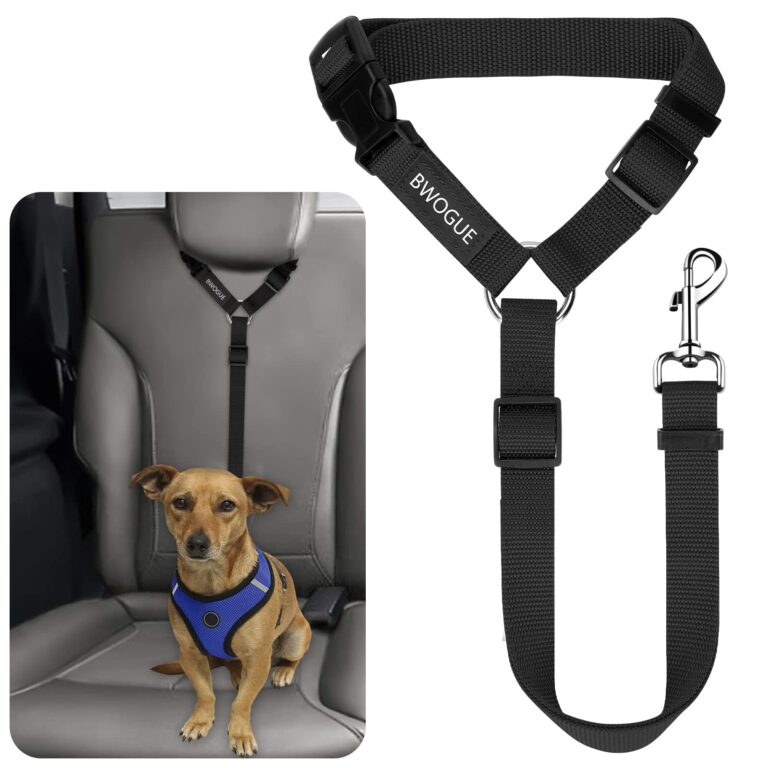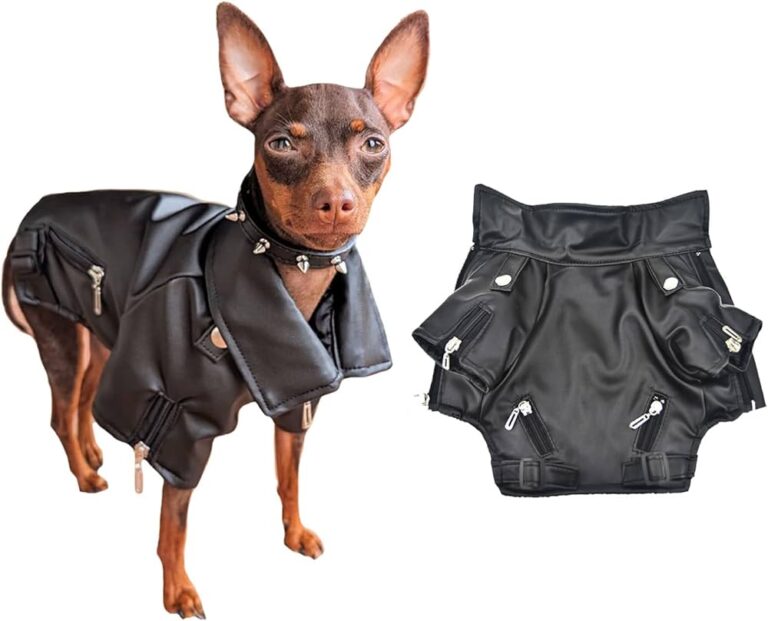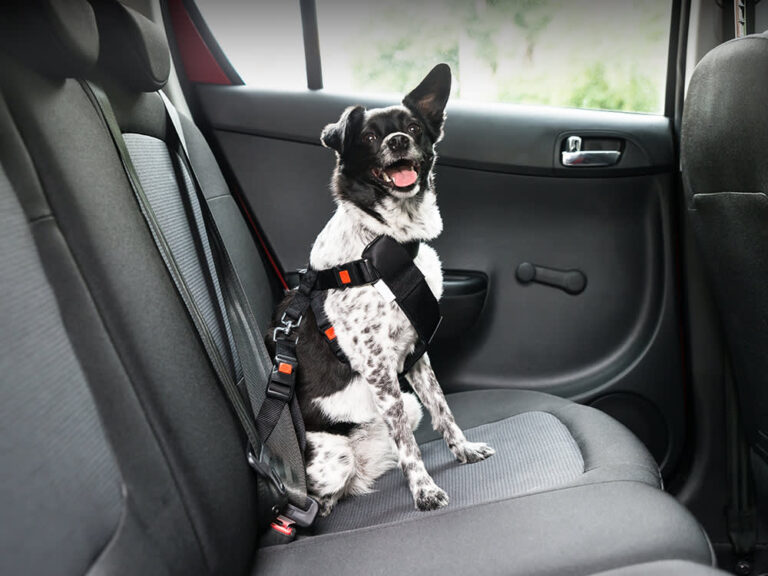Should Dogs Sit in Front Or Back of Car? Safety First!
Dogs should sit in the back of the car for safety. This prevents distractions and reduces injury risk.
Ensuring your dog’s safety during car trips is crucial. Dogs sitting in the front seat can distract the driver and pose a safety hazard. Airbags can also injure pets in case of an accident. The back seat is a safer option, especially with a pet seatbelt or carrier.
These measures keep your dog secure and minimize movement. Safe travel practices protect both the pet and passengers. Investing in proper restraints ensures a safer journey for everyone. Always prioritize your dog’s safety while on the road. Proper restraints can prevent injuries and ensure a smooth trip.
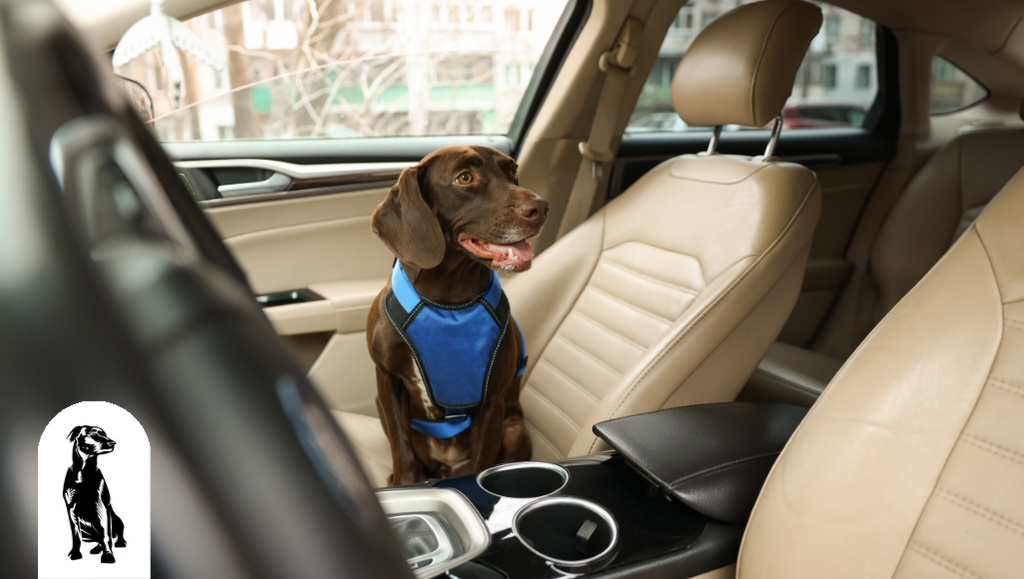
Credit: plushpawsproducts.com
Introduction To Canine Car Safety
Car safety is crucial for everyone, including our furry friends. Ensuring your dog is safe during travel is essential. A secure dog reduces distractions and prevents injuries.
Importance Of Pet Safety During Travel
Pet safety during car travel is often overlooked. Many people don’t realize the risks involved. An unrestrained dog can cause accidents by distracting the driver. In a crash, an unsecured dog can become a projectile.
Using proper restraints, like a dog seat belt or crate, can save lives. These tools keep dogs secure and reduce the chance of injury. It’s not just about the dog’s safety but everyone’s safety in the car.
| Restraint Type | Benefits |
|---|---|
| Dog Seat Belt | Keeps dog secure; reduces distraction |
| Crate | Provides protection in crashes |
| Pet Barrier | Prevents dog from moving to front seats |
Common Misconceptions About Dogs In Cars
- Dogs are safe without restraints: Many believe that dogs don’t need restraints. This is false and dangerous.
- Small dogs are safer in the front seat: Front seats are not safer for small dogs. Airbags can be harmful to them.
- Windows down is enough: Open windows can be dangerous. Dogs might jump out or get injured by debris.
Understanding these misconceptions helps promote better pet safety. Always prioritize secure travel for your furry friends.
Assessing The Risks: Front Vs. Back
When traveling with your dog, safety is a priority. Deciding whether your dog should sit in the front or back seat is crucial. Each option has its own set of risks. Understanding these risks will help keep your furry friend safe.
Potential Dangers For Dogs In The Front Seat
Dogs in the front seat face several dangers. Airbags can be deadly for dogs. In an accident, an airbag can cause serious injury or death. Even a minor collision can activate the airbag.
Another risk is driver distraction. A dog in the front seat can divert your attention. This increases the chance of an accident. Dogs may also interfere with the steering wheel or gear shift.
The front seat also exposes dogs to greater impact in a crash. Front-seat passengers often face more severe injuries. Dogs are no exception.
Safety Concerns For Rear Seat Canine Passengers
The back seat is generally safer for dogs. Yet, it is not without risks. Dogs in the back seat can still get injured in a crash. Unrestrained dogs can be thrown around or ejected from the car.
Using a dog seat belt or harness can reduce these risks. These devices keep your dog secure. They also limit movement, preventing distractions.
Rear seat airbags can also pose a threat. Not all cars have them, but those that do can injure a dog. Check your car’s features before traveling.
| Front Seat | Back Seat |
|---|---|
| Airbag danger | Less impact |
| Driver distraction | Use of seat belts/harnesses |
| Greater impact in crashes | Potential rear airbags |
Choosing the right seat for your dog involves understanding these risks. Make informed decisions to ensure your dog’s safety on the road.
Understanding Airbag Hazards For Dogs
Many pet owners wonder where their dogs should sit in the car. The location can affect their safety. One critical aspect to consider is the presence of airbags. Airbags are designed to protect humans, but they can be dangerous for dogs.
How Airbags Can Harm Canine Companions
Airbags deploy with tremendous force. This force is enough to injure a small dog severely. Even larger dogs are not safe from this risk. The sudden impact can cause broken bones or even death.
Dogs do not sit like humans. Their position in the car can put them in the direct path of an airbag. This makes the front seat a dangerous place for pets.
Minimizing Risk With Proper Seating
The safest place for dogs is the back seat. This reduces the risk of airbag injury. Use a pet seatbelt or carrier to secure your dog. These tools keep your dog safe and prevent distractions while driving.
Consider a barrier to keep your dog in the back seat. This prevents them from jumping into the front seat. It also ensures they stay safe in case of an accident.
| Seating Option | Pros | Cons |
|---|---|---|
| Front Seat |
|
|
| Back Seat |
|
|
Always consider your dog’s safety first. Proper seating can prevent accidents and injuries.
The Role Of Car Restraints For Dogs
Having your dog in the car can be fun. But safety should be a top priority. Car restraints for dogs are essential to keep your furry friend safe. They prevent injuries during sudden stops or accidents. Restraints also help to avoid distractions while driving. Understanding the types and choosing the right one is key.
Types Of Canine Restraints And Their Uses
There are several types of restraints available. Each serves a unique purpose.
| Type | Use |
|---|---|
| Dog Seat Belts | Keep dogs seated and prevent movement |
| Dog Car Harnesses | Provide added security and comfort |
| Dog Crates | Offer a confined space and reduce anxiety |
| Booster Seats | Elevate small dogs and allow them to see out |
Choosing The Right Restraint For Your Dog
Selecting the right restraint depends on your dog’s size and behavior. Follow these steps to make an informed choice:
- Measure your dog’s weight and size.
- Consider your dog’s temperament and comfort.
- Check compatibility with your car’s seat belts.
- Read reviews and safety ratings.
- Test the restraint on short trips first.
By taking these steps, you ensure your dog’s safety and comfort. A well-chosen restraint makes car rides enjoyable and secure for everyone.
Legal Considerations And State Laws
Traveling with your dog can be fun. But it’s important to know the legal considerations and state laws about where your dog should sit in the car. This section will help you understand your legal obligations and the variations in pet travel laws by state.
Understanding Your Legal Obligations
Pet travel laws aim to keep everyone safe. Knowing these laws can prevent fines and accidents.
Many states have rules for restraining pets in vehicles. These laws help avoid distractions and injuries. Always check the rules before a road trip.
Some states require seat belts or crates for pets. These devices protect both pets and passengers. You can find these rules online or ask a local authority.
Variations In Pet Travel Laws By State
Pet travel laws differ from state to state. It’s important to understand the rules in each place you visit.
| State | Pet Travel Law |
|---|---|
| California | Pets must be restrained if in an open truck bed. |
| Connecticut | No specific law, but general distracted driving laws apply. |
| Maine | Pets must be secured if in an open vehicle. |
| New Jersey | Pets must be restrained with a seat belt or crate. |
Some states like California and New Jersey have strict laws. Others have more general guidelines. Always check local laws before traveling.
Use a seat belt harness or crate for safety. These tools keep your pet secure and reduce the risk of injury.
Remember, keeping your dog safe is the priority. Knowing and following the laws ensures a smooth trip for everyone.
Behavioral Factors To Consider
Deciding whether your dog should sit in the front or back of the car involves more than just safety. Understanding your dog’s behavior can make car rides more enjoyable. This section explores key behavioral factors.
Assessing Your Dog’s Comfort And Anxiety Levels
Comfort and anxiety levels play a big role in your dog’s car ride experience. Some dogs feel more secure in the back seat, away from the dashboard and windshield.
Observe your dog’s behavior during short trips. Does your dog seem more relaxed in the front or back? Use these observations to guide your decision.
| Comfort Factors | Indicators |
|---|---|
| Space | Does your dog have enough room to lie down? |
| View | Is your dog calm when looking out the window? |
| Proximity | Does your dog feel safer being close to you? |
Training Tips For Car Rides
Training your dog for car rides can reduce anxiety. Start with short, positive trips to make your dog comfortable.
- Start Small: Begin with brief car rides.
- Positive Reinforcement: Reward your dog with treats and praise.
- Consistent Routine: Keep a regular car routine.
Practice getting in and out of the car. Make this a pleasant experience to build positive associations.
Professional Insights On Dog Car Safety
Ensuring your dog’s safety during car rides is crucial. Experts offer valuable insights on whether your dog should sit in the front or back of the car. This section dives into professional advice from veterinarians and animal behaviorists.
Veterinarian Recommendations
Veterinarians stress the importance of keeping dogs safe during car rides. They recommend placing your dog in the back seat.
This reduces the risk of injury during sudden stops or accidents. Veterinarians suggest using a dog seatbelt or a crate to secure your pet.
Below is a table summarizing key veterinarian recommendations:
| Recommendation | Reason |
|---|---|
| Back Seat Placement | Reduces Injury Risk |
| Use of Dog Seatbelt | Prevents Movement |
| Use of Crate | Provides Extra Safety |
Advice From Animal Behaviorists
Animal behaviorists focus on your dog’s comfort and stress levels during car rides. They recommend the back seat for a calmer experience.
Dogs in the front seat may get anxious due to the constant movement and noise. The back seat offers a quieter environment, helping to keep your dog relaxed.
Here are some key tips from animal behaviorists:
- Place your dog in the back seat for a calmer ride.
- Use calming aids like familiar blankets or toys.
- Take regular breaks for your dog to stretch and relieve itself.
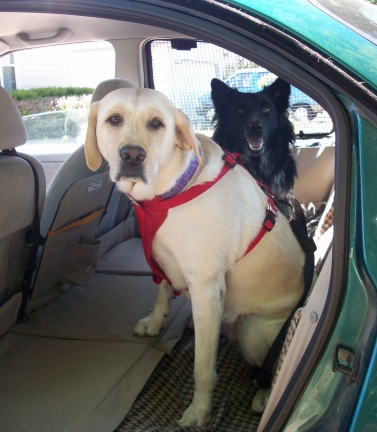
Credit: ontariospca.ca
Creating A Safe And Enjoyable Journey
Traveling with your dog can be fun. It is important to ensure their safety and comfort. This guide helps you prepare for a smooth trip with your furry friend.
Preparation Checklist For Dog-friendly Travel
- Secure your dog with a pet seatbelt or a travel crate.
- Bring a comfortable blanket or bed for your dog.
- Carry fresh water and a travel bowl.
- Pack your dog’s favorite toys to keep them entertained.
- Ensure your dog has proper identification tags.
- Plan for regular breaks for bathroom and exercise.
Emergency Protocols And First Aid
Always be prepared for emergencies. Knowing what to do can save your dog’s life.
| Emergency | Protocol |
|---|---|
| Heatstroke | Move to a cool area, offer water, and wet their paws. |
| Injury | Apply pressure to wounds, use a bandage, and visit a vet. |
| Motion Sickness | Stop the car, offer water, and provide fresh air. |
Keep a first aid kit in your car. It should include bandages, antiseptic wipes, and tweezers.
- Learn basic pet first aid skills.
- Have your vet’s contact information handy.
- Know the location of the nearest animal hospital.
Conclusion: Making The Right Choice For Your Dog
Deciding whether your dog should sit in the front or back of the car is crucial. It’s essential to consider both safety and comfort for your furry friend. This decision impacts not only your pet’s well-being but also your peace of mind.
Balancing Safety And Comfort
Safety should always be your top priority. A dog should never sit in the front seat if there are airbags. Airbags can seriously injure your dog in an accident. The back seat is generally safer for your pet.
Comfort is also important. Your dog should feel secure and relaxed during car rides. Use a pet seat belt or a secured crate to enhance both safety and comfort.
Here’s a quick comparison to help you decide:
| Aspect | Front Seat | Back Seat |
|---|---|---|
| Safety | Low (due to airbags) | High |
| Comfort | Medium | High |
| Accessibility | High | Medium |
Final Thoughts On Responsible Pet Ownership
Being a responsible pet owner means ensuring your dog’s safety and comfort during car rides. Always use a pet seat belt or crate to secure your dog. Avoid letting your dog sit in the front seat, especially if airbags are present.
Plan regular breaks during long trips. Let your dog stretch its legs and take potty breaks. Always carry water and snacks to keep your dog hydrated and happy.
In summary, the back seat is often the better choice. It offers more safety and comfort for your dog. By making thoughtful decisions, you ensure a pleasant and safe journey for your furry friend.
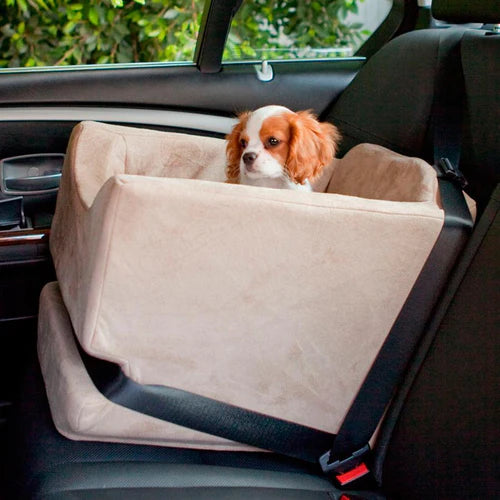
Credit: animalsmatter.com
Frequently Asked Questions
Is It Better To Put A Dog In The Front Seat Or Back Seat?
It’s safer to put a dog in the back seat. Use a pet seat belt or crate for added security.
Where Should My Dog Sit In The Car?
Your dog should sit in the back seat. Use a dog seat belt or a pet carrier for safety.
Should A Dog Sit In Front Or Back?
Dogs should sit in the back seat for safety. Use a pet seat belt or crate to secure them.
What Is The Best Way To Travel With A Dog In The Car?
Secure your dog with a harness or crate. Ensure proper ventilation. Take frequent breaks for water and bathroom needs.
Conclusion
Choosing the safest spot for your dog in the car is crucial. The back seat is generally safer. Use a harness or carrier for added protection. Prioritize your pet’s safety to ensure enjoyable travels. Remember, a secure dog means a stress-free journey for everyone.
Always prioritize safety on the road.
- Can I Get in a Taxi Without a Car Seat? - January 26, 2025
- Can I Get Chlamydia From a Toilet Seat? - January 26, 2025
- Can I Get an Uber With a Car Seat? - January 26, 2025


